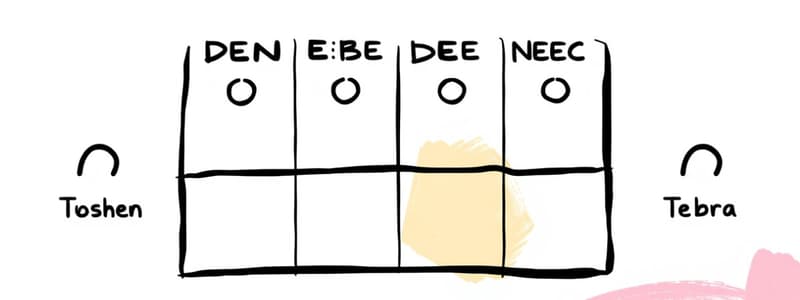Podcast
Questions and Answers
Identifying the factors involves categorising them based on their impact on work progress.
Identifying the factors involves categorising them based on their impact on work progress.
True (A)
A risk impact probability and impact matrix is utilized to categorise factors.
A risk impact probability and impact matrix is utilized to categorise factors.
False (B)
Creating a contingency strategy involves planning responses for each identified factor.
Creating a contingency strategy involves planning responses for each identified factor.
True (A)
It is unnecessary to share the contingency plan with stakeholders once it is completed.
It is unnecessary to share the contingency plan with stakeholders once it is completed.
Reviewing and updating the contingency plan should be done occasionally.
Reviewing and updating the contingency plan should be done occasionally.
Deadlines help track when tasks need to be completed and their expected outcomes.
Deadlines help track when tasks need to be completed and their expected outcomes.
Allocating time for tasks should be based solely on estimates without considering past experience.
Allocating time for tasks should be based solely on estimates without considering past experience.
A contingency plan should outline the key factors that can disrupt work progress.
A contingency plan should outline the key factors that can disrupt work progress.
Buffer times between tasks are unnecessary if each task is well planned.
Buffer times between tasks are unnecessary if each task is well planned.
Prioritisation of tasks is not an essential element in managing deadlines.
Prioritisation of tasks is not an essential element in managing deadlines.
Factors like power outages should be included in a contingency plan.
Factors like power outages should be included in a contingency plan.
It is best practice to give yourself little time to complete tasks to enhance efficiency.
It is best practice to give yourself little time to complete tasks to enhance efficiency.
The steps needed to complete each task should be organized in the order they must be completed.
The steps needed to complete each task should be organized in the order they must be completed.
Flashcards are hidden until you start studying
Study Notes
Deadlines and Timeframes
- Deadlines serve to track completion dates and expected deliverables for tasks.
- Common elements in deadlines include specific start/end dates, task prioritisation, and expected outcomes.
Organising Deadlines
- Identify and list steps necessary for each task, sequencing them in the order of completion.
- Include required resources and individuals for task accomplishment.
- Allocate time for each step based on prior experience or estimates if the task is new.
- Provide buffer time between tasks and account for breaks to improve efficiency.
Contingency Plan
- A contingency plan addresses potential problems that could hinder task completion, facilitating quick responses to adverse events.
- Key elements include foreseeable contingencies, their prioritisation, and designated solutions.
Creating a Contingency Plan
- Identify potential factors affecting work progress and their impact on resources.
- Categorise identified factors based on their areas of impact, using mapping techniques for clarity.
- Prioritise factors according to their threat level using a risk impact matrix to visualise outcomes.
- Develop a strategy for each factor, detailing steps to restore normalcy if issues arise.
- Visual aids, like tables or maps, can enhance understanding and implementation of the plan.
Sharing and Maintaining the Plan
- Distribute the completed contingency plan to all relevant stakeholders to ensure awareness and monitoring.
- Regularly review and update the plan to adapt to changing conditions and improve preparedness.
Studying That Suits You
Use AI to generate personalized quizzes and flashcards to suit your learning preferences.




